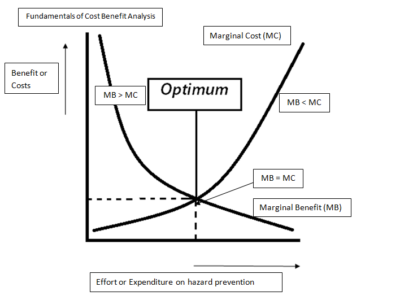What policies lead to greenhouse gas emissions declines?
A recent study emphasizes the role of policy mixes in driving short-term emissions reductions
In a series of posts (beginning here, and ending here) last month, I outlined an approach to climate policy that emphasizes the role of subsidies in building political support and technological progress for climate policy. In doing so, I drew heavily on existing political science research and case studies from North America and Europe. But another fruitful approach for climate policy research can be studies that look at policies and emissions results from a large number of countries around the world. An article published last August in the journal Science took just such an approach, and received a lot of media coverage in the process. What lessons can we take from that paper?
The first lesson is one consistent with the pre-existing literature and case studies – generally speaking, the most effective policies in driving short-term reductions are a mix of different tools, including subsidies, pricing, and regulation. Policy mixes allow for policies that interact to be more effective – for instance, subsidies that reduce the costs of decarbonization technologies can have extra force when paired with carbon pricing.
The authors also emphasized the role that carbon pricing, on its own and as part of a policy mix, can have in driving short-term emissions reductions. This is an important finding, and also consistent with the literature and case studies. But there are also key limits to the study design. The authors restrict their analysis to specific short-term drops in emissions that can be correlated with specific policy changes within a two-year window. That approach does not allow identification of what drives long-term changes in emissions reductions. However, in many ways those long-term changes are far more important from a climate policy perspective. Carbon pricing can drive relatively low cost changes in behavior, practices, and technology, but the evidence indicates that it does not drive the large-scale, long-term investments needed to advance the innovation needed for decarbonization or to promote changes in political economy. As I noted in prior posts, it is tools such as subsidies that are more effective in driving those kinds of investments, and those long-term changes.
Of course, identifying what is driving long-term changes in technology, economics, and politics is a difficult challenge, and one that is not easily amenable to the kinds of quantitative methods the study authors used. Indeed, the authors note the role that sequencing plays in climate policy, and that longer-term changes in politics and technology may produce opportunities where carbon pricing may be more effective.
Weaknesses aside, the article is an important contribution. We need more studies of this kind and approach to help provide insights we can build on to help us understand the policy path forward for decarbonization.
Reader Comments
2 Replies to “What policies lead to greenhouse gas emissions declines?”
Comments are closed.






Hi Eric, I appreciate your recent posts on climate policy. I discuss the recent article in Science, along with a host of other recent peer-reviewed research, in my new book Carbon Pricing: Why We Need It, How It’s Working, and How to Build Support. It’s available for free download at https://www.academia.edu/114168253/Carbon_Pricing_Why_We_Need_It_How_Its_Working_and_How_to_Build_Support. On the issue of carbon taxes and innovation, in addition to the book, I encourage you to check out my whitepaper, “How Carbon Taxes Induce and Accelerate Clean Innovation,” at https://static.prod01.ue1.p.pcomm.net/cclobby/content/contents/training/Economics/Marshall-Carbon-Taxes-Innovation.pdf.
Apparently studying carbon pricing employs plenty of economists and even makes Nobel laureates. As a retired CEO who is now working for our children, I have a different take on carbon pricing.
Fees or taxes on current GHG pollution: Many people advocate a “price on carbon” as the simple, obvious solution–just add a carbon tax and economics will correct the problem. While carbon taxes can raise lots of revenue, their direct impact on pollution reduction is quite limited. (The California or Washington state cap-and-trade systems are essentially a carbon tax; see Making Climate Policy Work by Cullenward and Victor.)
First, the level of taxation necessary to steer consumers away from fuel usage is so high that it would cause a recession (witness how Americans continued to buy larger vehicles in the past decade, even as gasoline prices grew an equivalent of $200 to $300 per MTCO2e.) The price elasticities of the main fossil fuels are far too low. (Coal is an exception, where it’s already so expensive that a small carbon tax can kill a plant in some cases.) Most experts agree that the heavy lifting must come from policies other than a price on current emissions. This is numerically confirmed and hidden on Table 88, page 193, of Washington’s Climate Commitment Act Preliminary Regulatory Analyses, where the Act is designed to contribute a 10% emission reduction over 27 years. Not exactly 50% by 2030. https://apps.ecology.wa.gov/publications/UIPages/documents/2202015.pdf
Secondly and most important, infrastructure decisions are what lock in and dominate our largest household emissions (42% of US emissions.) If we have an inefficient car or house, we usually just buy the fuel necessary, regardless of volatility in the fuel price. What is necessary is policies that steer the purchases of new vehicles or other fossil-fuel infrastructure to zero emission options. Your next car should be electric—but most consumers don’t consider years of fuel costs. Your next furnace should be a heat pump—but few consumers consider years of fuel costs and don’t like changes generally. So they buy another polluting car or furnace, locking in emissions for another 16 years regardless of who owns them in the future.
Thirdly, the portion of household budgets dedicated to energy costs increases for lower income families. Thus a use-related energy fee hurts vulnerable populations the most. (WA and CA counteract this problem by giving some of the revenue back to low-income families.)
Fees on future emissions of polluting infrastructure: The evidence is clear that upfront pollution fees on the purchase of new vehicles are dramatically effective at steering vehicle purchases to EVs. https://poweroregon.org/wp-content/uploads/2023/03/SER-Nov-2019-Final-191111.pdf As a result of their large upfront fees, Norway recently achieved nearly 100% EV market share and is the only country on track to reduce vehicle pollution 50% by 2030. The equivalent EV fuel costs are significantly less than gasoline, and much less when charged by rooftop solar.
To discourage new gas appliances in new homes or replacement cases, California and other states charge an upfront fee for permits or require low-NOx units, which are more expensive.
Add on the costs of toxic emissions: The social cost of carbon (SCC) estimates only the long-term global climate costs of emissions. Instead of getting people to respect glaciers melting somewhere, decades from now, the social costs of toxic pollution from fossil fuel combustion add to SCC and are felt locally and immediately.
Toxic pollution from vehicles: The healthcare cost of toxic emissions from the combustion of gasoline in the US is estimated to be $1.7 trillion, or over $12 per gallon! https://www.eesi.org/articles/view/in-gasolinegate-the-true-cost-of-gasoline-far-exceeds-what-we-see-at-the-pump#:~:text=According%20to%20the%20authors%2C%20gasoline,specifically%20by%20gasoline%2Dpowered%20cars.
We kill more people in the US from vehicle emissions than from vehicle accidents. This cost is from local and immediate health impacts, especially in those communities living near busy highways or heavy shipping sites such as warehouses. At an average of 490 gallons per year per vehicle, 16 years at $12 per gallon would be an upfront toxic pollution fee over $78,000!
Toxic pollution from methane in households: A recent RMI study found that 13% of childhood asthma cases in the US can be linked to having a gas stove in the home. https://rmi.org/gas-stoves-health-climate-asthma-risk/ The indoor air quality from gas stoves would be illegal if it was outdoors. The social cost of methane (natural gas) health impacts from combustion in California homes was estimated to average about $370 per household per year. https://www.nrdc.org/bio/pierre-delforge/gas-appliances-pollute-indoor-and-outdoor-air-study-shows At an average of $370 per year for 16 years, that would be an upfront toxic pollution fee of nearly $6,000!